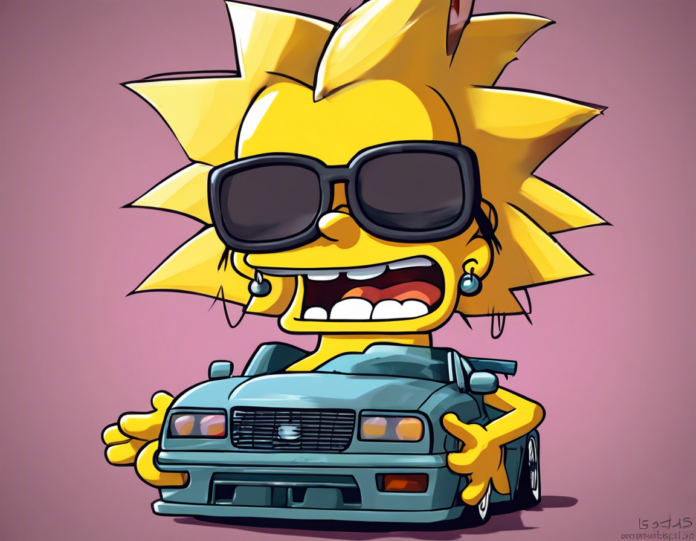Introduction
In the vast and often bizarre landscape of internet culture, there exists a phenomenon known as Lisa Simpson R34. This particular corner of the web has sparked controversy and divided opinions among fans of “The Simpsons” as well as those with a keen eye on internet subcultures. In this article, we will delve into the world of Lisa Simpson R34, exploring its origins, impact, and the ethical considerations surrounding it.
Who is Lisa Simpson?
Before delving into the more contentious aspects of Lisa Simpson R34, it’s essential to understand the character at the center of it all. Lisa Simpson is a fictional character from the long-running animated sitcom “The Simpsons.” She is the intelligent and socially conscious daughter of the Simpson family, known for her activism, passion for the environment, and love of music. Despite being just eight years old, Lisa is portrayed as a highly intellectual and introspective character.
What is R34?
R34 is a term that originated on internet platforms, particularly in online communities focused on fandoms and fan art. It refers to a rule established on the website 4chan that states, “If it exists, there is porn of it – no exceptions.” This rule has since been applied more broadly to signify the creation of sexually explicit content based on any existing character or concept, regardless of its original context.
The Rise of Lisa Simpson R34
As one of the most beloved characters from “The Simpsons,” Lisa Simpson has inspired a wide range of fan art and fan fiction over the years. However, the emergence of Lisa Simpson R34 took this creative expression in a controversial direction. Artists and creators began producing sexually explicit content featuring Lisa Simpson, often depicting her in provocative or explicit scenarios.
Legal and Ethical Concerns
The creation and distribution of explicit content featuring underage characters like Lisa Simpson raise significant legal and ethical concerns. In many jurisdictions, the production of such material is considered child pornography and is subject to severe legal penalties. Even in the realm of fictional art, the depiction of minors in explicit or sexual situations can have serious consequences.
Impact on Fandom and Community
The emergence of Lisa Simpson R34 has had a notable impact on the wider “Simpsons” fandom and online communities. While some individuals may see it as a form of creative expression or a way to explore different aspects of a well-known character, others view it as inappropriate, disrespectful, and harmful. The controversy surrounding Lisa Simpson R34 has led to debates within fan communities about artistic freedom, consent, and the boundaries of acceptable content.
Addressing the Issues
As with any contentious topic, it is essential to approach the discussion of Lisa Simpson R34 with sensitivity and awareness of the potential harm it can cause. It is crucial for creators and consumers of fan art to be mindful of the legal and ethical considerations involved in depicting underage characters in explicit situations. Respecting boundaries, seeking consent, and promoting a safe and inclusive creative environment are key principles to uphold in any fan community.
Conclusion
The world of Lisa Simpson R34 is a complex and controversial one, raising challenging questions about artistic interpretation, free speech, and ethical standards in online communities. While some may see it as a harmless form of creative expression, others find it deeply problematic and potentially harmful. As fans continue to navigate these challenging waters, it is essential to engage in open and constructive dialogue, uphold ethical standards, and promote a culture of respect and consent in all creative endeavors.
Frequently Asked Questions (FAQs)
1. Is creating Lisa Simpson R34 legal?
No, the creation of sexually explicit content featuring underage characters like Lisa Simpson is illegal in many jurisdictions and can be considered child pornography.
2. Why is Lisa Simpson R34 controversial?
Lisa Simpson R34 is controversial due to its depiction of an underage character in sexually explicit or provocative situations, raising ethical concerns about consent and appropriate boundaries in fan art.
3. Are there any guidelines for creating fan art involving existing characters?
While there are no universal guidelines, creators of fan art are encouraged to respect the original source material, avoid explicit content involving underage characters, and prioritize consent and ethical considerations in their work.
4. How can fan communities address issues related to controversial fan art?
Fan communities can address issues related to controversial fan art by promoting open dialogue, establishing clear guidelines for acceptable content, and fostering a culture of respect and inclusivity among members.
5. What are some alternative ways to engage with fan communities and express creativity?
There are numerous alternative ways to engage with fan communities and express creativity, including participating in fan discussions, creating non-explicit fan art, writing fan fiction, and supporting official merchandise and projects related to the source material.


